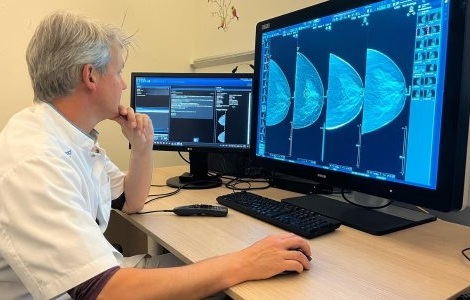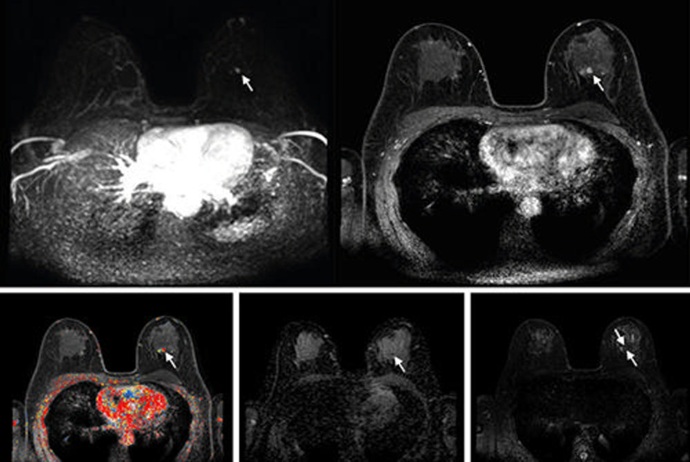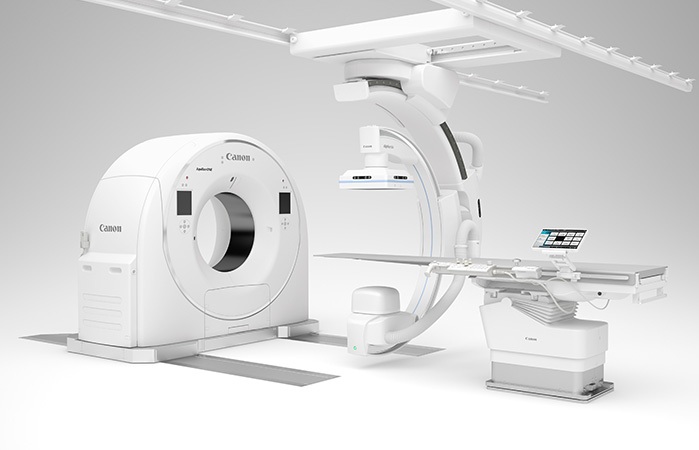Ultrasound Bone Assessment Could Increase Osteoporosis Screening
|
By MedImaging International staff writers Posted on 06 Mar 2019 |
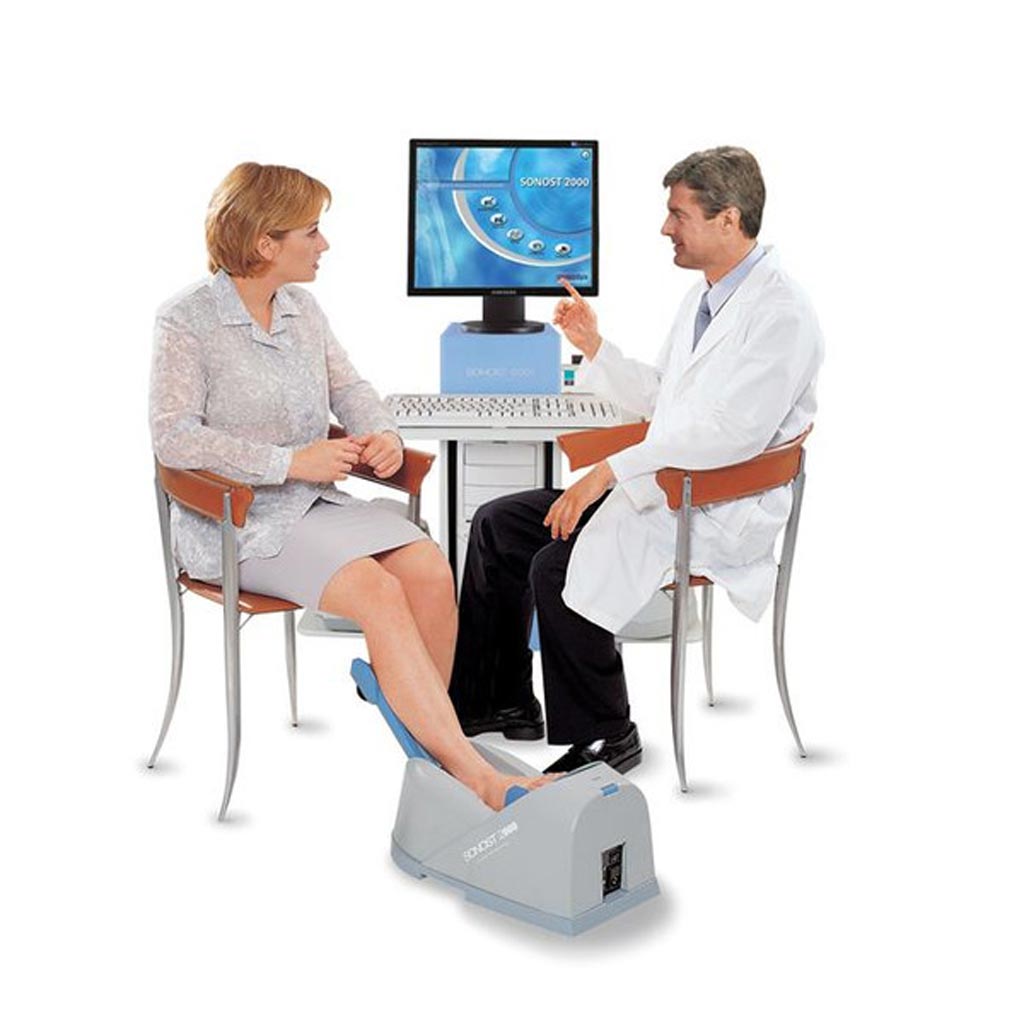
Image: The Sonost 2000 calcaneus ultrasound bone densitometer (Photo courtesy of Econet).
A new study suggests that calcaneus ultrasonography (US) can establish bone mineral density (BMD) on par with gold standard dual-energy x-ray absorptiometry (DXA).
Researchers at the Louis Stokes Cleveland VA Medical Center (OH, USA), the West Virginia School of Osteopathic Medicine (WVSOM; Lewisburg, USA), and other institutions conducted a study involving 99 patients at a rural primary care facility in order to establish data ranges from US of the calcaneus (heel bone) that correspond to BMD stratification as identified by DXA, and to determine whether vitamin D concentration adds to US bone health assessment.
Ultrasonography was used to scan the left and right calcaneus, and blood was collected for vitamin D analysis. Other data collected included fracture risk assessment tool parameters, menstrual history, and drug and supplement use. The researchers then calculated correlations within and between DXA and US measurements, as well as correlations between DXA, US measurements, and vitamin D levels. Finally, predictive performance of US readings on bone health (as determined by DXA scan) was assessed.
The results revealed that US readings of either the left or right foot were predictive of bone quality, with no differences found between them. There was no correlation found between DXA- and US-assessed BMD and vitamin D concentrations. The researchers added that while DXA scans remain the best option for thorough, comprehensive information on BMD, the equipment is expensive, immobile, and exposes patients to ionizing radiation, creating barriers to screening larger populations. The study was published in the March 2019 issue of the Journal of the American Osteopathic Association.
“Using ultrasound to scan the heel won't give us all the information we could gather with a full DXA scan. However, it gives us a clear enough snapshot to know whether we should be concerned for the patient,” concluded lead author associate professor of biomedical sciences Carolyn Komar, PhD, of WVSOM, and colleagues. “The affordability and mobility of a US machine enables its use as a screening method that may be applicable to large numbers of people.”
Unlike DXA, US does not measure BMD directly, but can provide indirect information on BMD, as well as more direct information on bone microarchitecture, such as trabecular number, connectivity, and orientation. It is important to remember that though indicative, an increase in BMD may not necessarily result in an improvement in bone strength, as the improved area may be the discontinuous end of a bony trabeculum, as opposed to strengthening a joined trabecular structure.
Related Links:
Louis Stokes Cleveland VA Medical Center
West Virginia School of Osteopathic Medicine
Researchers at the Louis Stokes Cleveland VA Medical Center (OH, USA), the West Virginia School of Osteopathic Medicine (WVSOM; Lewisburg, USA), and other institutions conducted a study involving 99 patients at a rural primary care facility in order to establish data ranges from US of the calcaneus (heel bone) that correspond to BMD stratification as identified by DXA, and to determine whether vitamin D concentration adds to US bone health assessment.
Ultrasonography was used to scan the left and right calcaneus, and blood was collected for vitamin D analysis. Other data collected included fracture risk assessment tool parameters, menstrual history, and drug and supplement use. The researchers then calculated correlations within and between DXA and US measurements, as well as correlations between DXA, US measurements, and vitamin D levels. Finally, predictive performance of US readings on bone health (as determined by DXA scan) was assessed.
The results revealed that US readings of either the left or right foot were predictive of bone quality, with no differences found between them. There was no correlation found between DXA- and US-assessed BMD and vitamin D concentrations. The researchers added that while DXA scans remain the best option for thorough, comprehensive information on BMD, the equipment is expensive, immobile, and exposes patients to ionizing radiation, creating barriers to screening larger populations. The study was published in the March 2019 issue of the Journal of the American Osteopathic Association.
“Using ultrasound to scan the heel won't give us all the information we could gather with a full DXA scan. However, it gives us a clear enough snapshot to know whether we should be concerned for the patient,” concluded lead author associate professor of biomedical sciences Carolyn Komar, PhD, of WVSOM, and colleagues. “The affordability and mobility of a US machine enables its use as a screening method that may be applicable to large numbers of people.”
Unlike DXA, US does not measure BMD directly, but can provide indirect information on BMD, as well as more direct information on bone microarchitecture, such as trabecular number, connectivity, and orientation. It is important to remember that though indicative, an increase in BMD may not necessarily result in an improvement in bone strength, as the improved area may be the discontinuous end of a bony trabeculum, as opposed to strengthening a joined trabecular structure.
Related Links:
Louis Stokes Cleveland VA Medical Center
West Virginia School of Osteopathic Medicine
Latest Ultrasound News
- Ultrasound Probe Images Entire Organ in 4D

- Disposable Ultrasound Patch Performs Better Than Existing Devices
- Non-Invasive Ultrasound-Based Tool Accurately Detects Infant Meningitis
- Breakthrough Deep Learning Model Enhances Handheld 3D Medical Imaging
- Pain-Free Breast Imaging System Performs One Minute Cancer Scan
- Wireless Chronic Pain Management Device to Reduce Need for Painkillers and Surgery
- New Medical Ultrasound Imaging Technique Enables ICU Bedside Monitoring
- New Incision-Free Technique Halts Growth of Debilitating Brain Lesions
- AI-Powered Lung Ultrasound Outperforms Human Experts in Tuberculosis Diagnosis
- AI Identifies Heart Valve Disease from Common Imaging Test
- Novel Imaging Method Enables Early Diagnosis and Treatment Monitoring of Type 2 Diabetes
- Ultrasound-Based Microscopy Technique to Help Diagnose Small Vessel Diseases
- Smart Ultrasound-Activated Immune Cells Destroy Cancer Cells for Extended Periods
- Tiny Magnetic Robot Takes 3D Scans from Deep Within Body
- High Resolution Ultrasound Speeds Up Prostate Cancer Diagnosis
- World's First Wireless, Handheld, Whole-Body Ultrasound with Single PZT Transducer Makes Imaging More Accessible
Channels
Radiography
view channel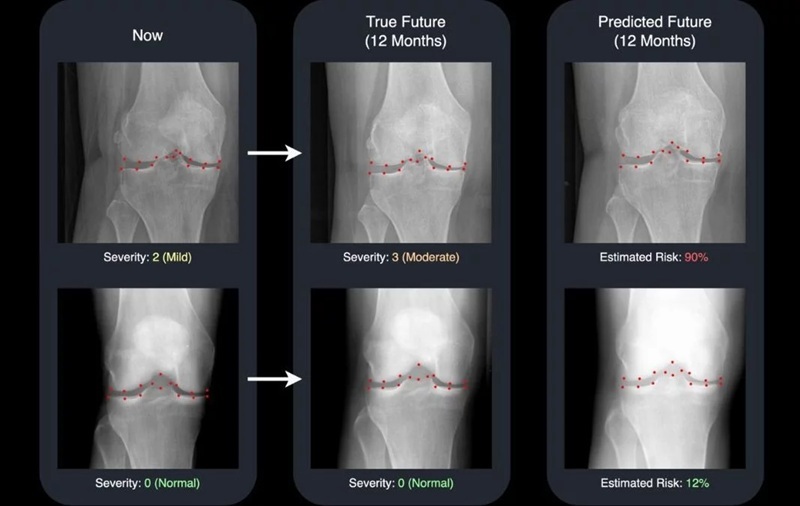
AI Generates Future Knee X-Rays to Predict Osteoarthritis Progression Risk
Osteoarthritis, a degenerative joint disease affecting over 500 million people worldwide, is the leading cause of disability among older adults. Current diagnostic tools allow doctors to assess damage... Read more
AI Algorithm Uses Mammograms to Accurately Predict Cardiovascular Risk in Women
Cardiovascular disease remains the leading cause of death in women worldwide, responsible for about nine million deaths annually. Despite this burden, symptoms and risk factors are often under-recognized... Read moreMRI
view channel
AI-Assisted Model Enhances MRI Heart Scans
A cardiac MRI can reveal critical information about the heart’s function and any abnormalities, but traditional scans take 30 to 90 minutes and often suffer from poor image quality due to patient movement.... Read more
AI Model Outperforms Doctors at Identifying Patients Most At-Risk of Cardiac Arrest
Hypertrophic cardiomyopathy is one of the most common inherited heart conditions and a leading cause of sudden cardiac death in young individuals and athletes. While many patients live normal lives, some... Read moreNuclear Medicine
view channel
New Imaging Solution Improves Survival for Patients with Recurring Prostate Cancer
Detecting recurrent prostate cancer remains one of the most difficult challenges in oncology, as standard imaging methods such as bone scans and CT scans often fail to accurately locate small or early-stage tumors.... Read more
PET Tracer Enables Same-Day Imaging of Triple-Negative Breast and Urothelial Cancers
Triple-negative breast cancer (TNBC) and urothelial bladder carcinoma (UBC) are aggressive cancers often diagnosed at advanced stages, leaving limited time for effective treatment decisions.... Read more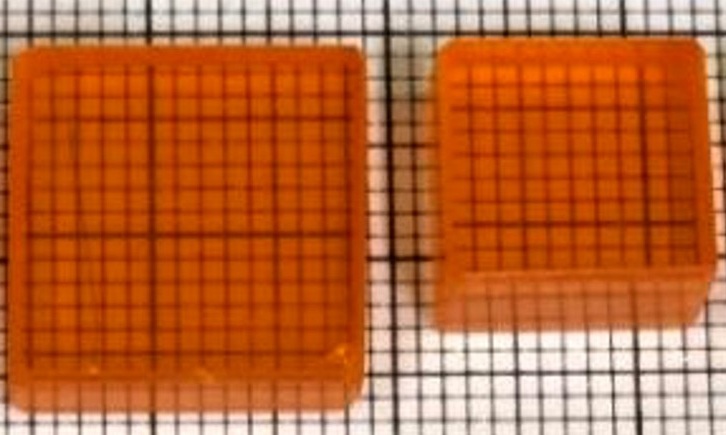
New Camera Sees Inside Human Body for Enhanced Scanning and Diagnosis
Nuclear medicine scans like single-photon emission computed tomography (SPECT) allow doctors to observe heart function, track blood flow, and detect hidden diseases. However, current detectors are either... Read more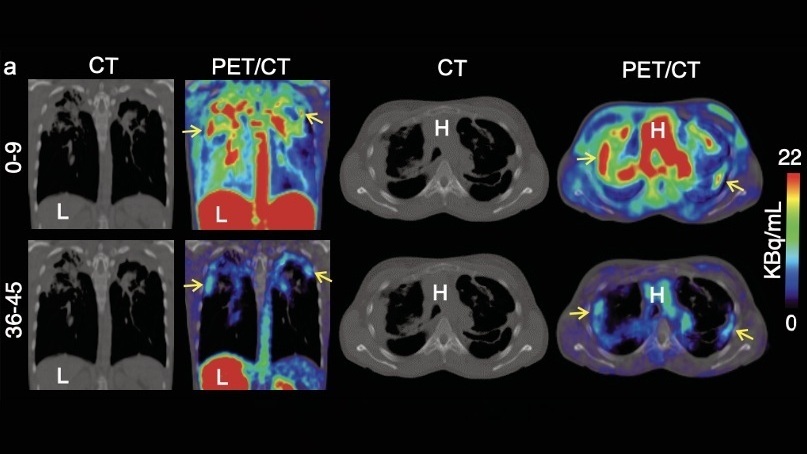
Novel Bacteria-Specific PET Imaging Approach Detects Hard-To-Diagnose Lung Infections
Mycobacteroides abscessus is a rapidly growing mycobacteria that primarily affects immunocompromised patients and those with underlying lung diseases, such as cystic fibrosis or chronic obstructive pulmonary... Read moreGeneral/Advanced Imaging
view channel
AI Tool Improves Medical Imaging Process by 90%
Accurately labeling different regions within medical scans, a process known as medical image segmentation, is critical for diagnosis, surgery planning, and research. Traditionally, this has been a manual... Read more
New Ultrasmall, Light-Sensitive Nanoparticles Could Serve as Contrast Agents
Medical imaging technologies face ongoing challenges in capturing accurate, detailed views of internal processes, especially in conditions like cancer, where tracking disease development and treatment... Read more
AI Algorithm Accurately Predicts Pancreatic Cancer Metastasis Using Routine CT Images
In pancreatic cancer, detecting whether the disease has spread to other organs is critical for determining whether surgery is appropriate. If metastasis is present, surgery is not recommended, yet current... Read moreImaging IT
view channel
New Google Cloud Medical Imaging Suite Makes Imaging Healthcare Data More Accessible
Medical imaging is a critical tool used to diagnose patients, and there are billions of medical images scanned globally each year. Imaging data accounts for about 90% of all healthcare data1 and, until... Read more
Global AI in Medical Diagnostics Market to Be Driven by Demand for Image Recognition in Radiology
The global artificial intelligence (AI) in medical diagnostics market is expanding with early disease detection being one of its key applications and image recognition becoming a compelling consumer proposition... Read moreIndustry News
view channel
GE HealthCare and NVIDIA Collaboration to Reimagine Diagnostic Imaging
GE HealthCare (Chicago, IL, USA) has entered into a collaboration with NVIDIA (Santa Clara, CA, USA), expanding the existing relationship between the two companies to focus on pioneering innovation in... Read more
Patient-Specific 3D-Printed Phantoms Transform CT Imaging
New research has highlighted how anatomically precise, patient-specific 3D-printed phantoms are proving to be scalable, cost-effective, and efficient tools in the development of new CT scan algorithms... Read more
Siemens and Sectra Collaborate on Enhancing Radiology Workflows
Siemens Healthineers (Forchheim, Germany) and Sectra (Linköping, Sweden) have entered into a collaboration aimed at enhancing radiologists' diagnostic capabilities and, in turn, improving patient care... Read more




 Guided Devices.jpg)







